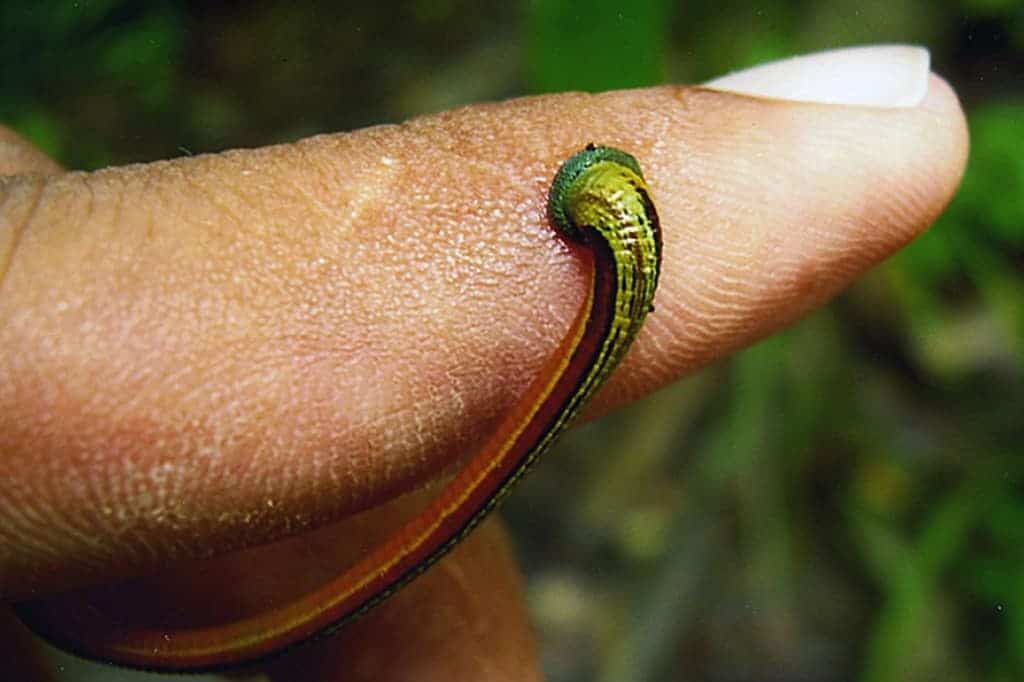How to protect yourself from leeches while trekking is a question most of us trekkers have.
Trekking is one of the best outdoor activities in many countries around the world. Trekkers or hikers enjoy the serenity and unspoiled beauty of nature. In many countries, it is also the only way to see the mountains and countryside and to appreciate and understand the local culture.
In the process of trekking, trekkers come across many challenges and rarely experience the joy of trekking. One of the most difficult challenges is the risk of leeches, especially in the humid monsoon season.
There are many different types of leeches, but by far, the most dangerous are those that suck blood.
Read how to get in shape for trekking here.
What does a leech look like?
When trekking in an area with a high leech population, it’s essential to know what these creatures look like and how to protect yourself from them.
A leech has a flattened body with two suckers. They can be in various colors, usually green or brown, and can vary in size from less than an inch to more than a foot. A segmented plate covers their mid-section called the ‘valve,’ which protects them when they are dormant and assists them while feeding.
Where are leeches found?
Since leeches are always on the lookout for blood, it is crucial to stay alert at all times. Leeches can be found in freshwater as well as saltwater environments. They live on land and in trees, on stream banks, and underneath rocks.
Be careful when trekking in a forest or marsh, as you may find leeches on your clothing, boots, backpack, sleeping bag, or tent.
Leeches are most active at night and during the wet season (usually October to April).
How to protect yourself from leeches while trekking?
Leech bites are rarely life-threatening, but they are extremely painful and disturbing to the victim. It is essential to know how to protect yourself from leeches while trekking. Let us get in-depth to it:
A. Precaution Methods
- Knowledge is the key to success.
The first important thing to know about leeches is that they are attracted to blood. You may find yourself in an uncomfortable situation if you walk into a leech-infested area without thinking. Leeches can land on your shoes, clothing, backpack, skin, or even in your mouth!
Leeches multiply in water, so avoid walking through areas where water is standing still. These parasites can reproduce up to 10 times a year.
- Leeches are attracted to moisture.
Leeches have a weak bite, but they can still inflict painful bites due to their size and strength. They can even detach easily from your skin, and they are known to crawl into ears or noses. As with other insects, you need to have a basic understanding of what attracts leeches.
Leeches particularly like dark colors and shiny surfaces. These parasites are attracted to moisture, so it is best not to get your clothes damp.
- Wear the right outfit
Keep your arms, legs, and feet covered to prevent leeches from crawling onto your skin. It is best to wear a long-sleeved shirt and pants.
If you encounter many leeches, it’s best to take them off as soon as possible. If you’re in an area with many leeches, try to wear shoes or boots that prevent you from getting your feet wet. Make sure your gear is waterproof, and check pockets are sealed if possible.
- Wear long socks
Wear football socks to prevent getting bitten by the leeches. It is best if you wear double-layered football socks.
You can also buy leech socks, which are a cheap and proven method of preventing leeches from getting in your feet.
- Apply DEET-based insect repellent, particularly to exposed skin areas.
Lightly spray yourself with DEET if you are going out in the evening. Then, cover all exposed skin (arms, legs, and neck) with clothing as much as possible. Then, wear long-sleeved shirts and long pants to minimize exposed skin.
Insect repellents such as DEET are a type of poison, and some insects can smell them (and other insect repellents) from miles away.
Here is a list of some of the best DEET sprays you might want to check out.
B. Aftermath of getting bitten
1. Do not panic: First off, DON’T PANIC! Nothing is as challenging to get rid of as leeches. Start by rinsing the blood off your lower regions and then try to get rid of the leech by smashing it with a stick or with a local knife if available (most likely, however, you will need to smash it with a rock).
2. Apply pressure on the bitten area: A harmless leech may have bitten you, but if the bite starts to itch, raise your arm and apply some pressure on the affected area. It may help dislodge the leech from your skin, and it could also prevent more blood loss.
3. Pull it off: If the bleeding is severe, you could try to pull it off using the fingernail on your middle finger. When removing the leech, be careful not to squeeze it. Different types of leeches may have hooks on their suckers. Any pressure can damage its body and cause fatal damage.
4. Use Dettol: The Dettol antiseptic is a popular product that has been used for over 90 years. It was initially designed to be a hospital disinfectant but now also has consumer products for household cleaning. In the case of leeches, apply a small amount of Dettol on the affected area after washing it with water. Dettol will dislodge leeches from the skin.
5. Get medical help: If you have been bitten by a leech more than once and it appears near your eye or nose, get medical help immediately. Leeches have strong jaws and can cause severe infection if they remain attached for long periods.
Read about the safest places to travel for women.
C. How to protect yourself from leeches while trekking: Local Remedies
- Lemon and Salt
The leech may have trouble removing the tarry paste. Make a paste of half a lemon (or lime if it’s not available) chopped up and a few teaspoons of salt. The salt causes the leech to release its grip on your skin. If you can, rub the mixture over your body, especially around puncture points, as the venom is spread through the body via pores in the skin.
Alternatively, you can apply vinegar or beer/wine/whisky/tequila to disinfect again.
- Soap and Tobacco
Soap and tobacco are perhaps some of the most surprising remedies. Soap is a poison to a leech, and its use in this method is for that reason. First off, light up a cigarette or tobacco (or even use a cigar), and then mix the ash with some soap. The combination of these two should kill the leech.
- Ask the locals
The locals of the area you are trekking in have more leeches prevention experience and some innovative cures. Ask them for some ideas.
- Will to survive
Lastly, have the will to survive.
Do not give up, do whatever you can to extract yourself (even if it is by kicking) from a leech’s grip. You have to keep fighting!
What to do after you have used all the protection methods?
After you have done the methods mentioned above, you can leave them be. Your body will naturally clot the blood and stop it from bleeding excessively.
After it has stopped bleeding, wash it. Apply a band-aid if you want.
You may feel itchy for some days in the area where the leech has bitten. Don’t worry; it will go away itself after a few days. If you want, you can put Candid Dusting powder on the areas affected.
Does a person die from a leech bite?
No, a person does not die from a leech bite. The human body will clot the blood and stop the bleeding itself.


